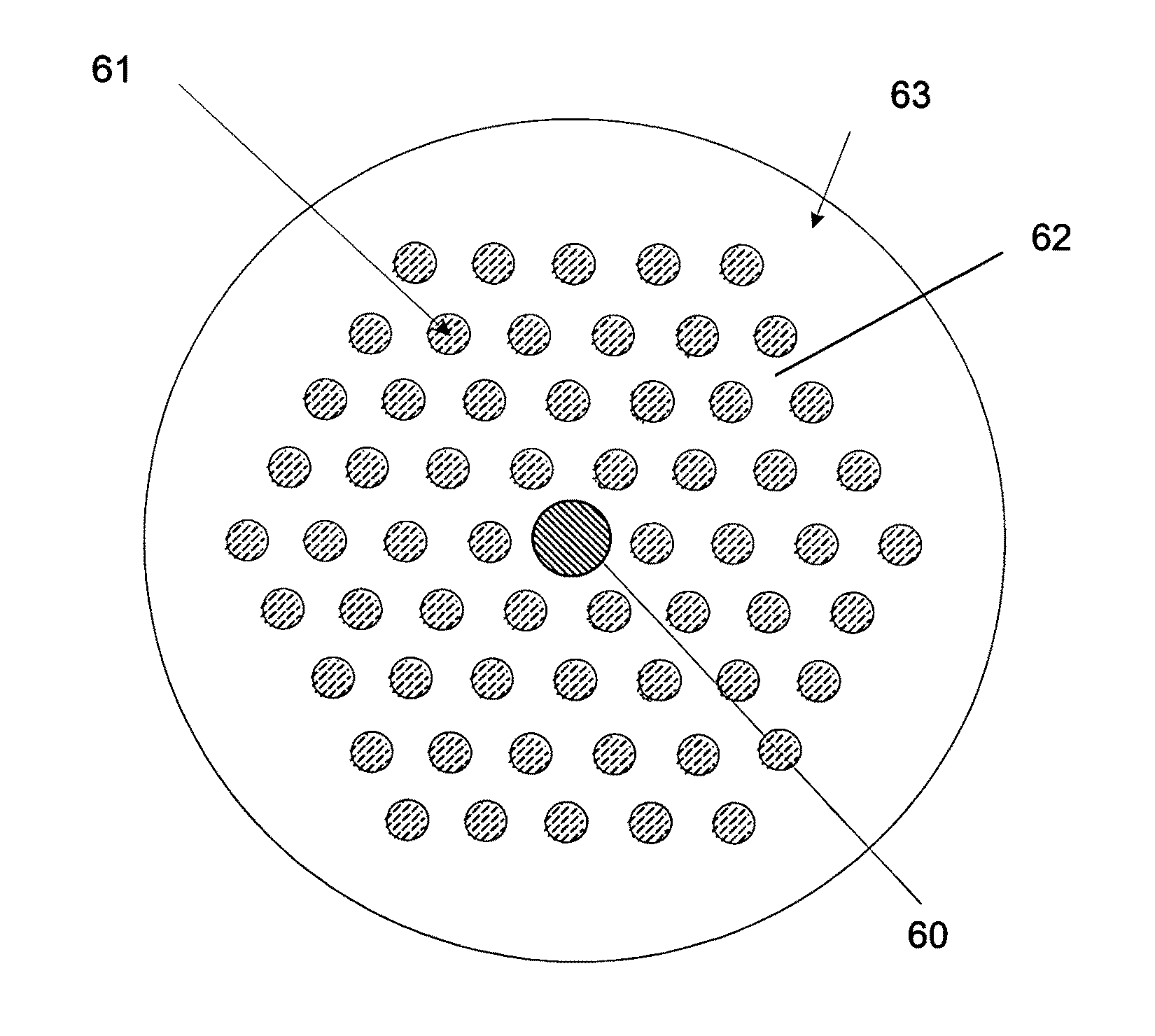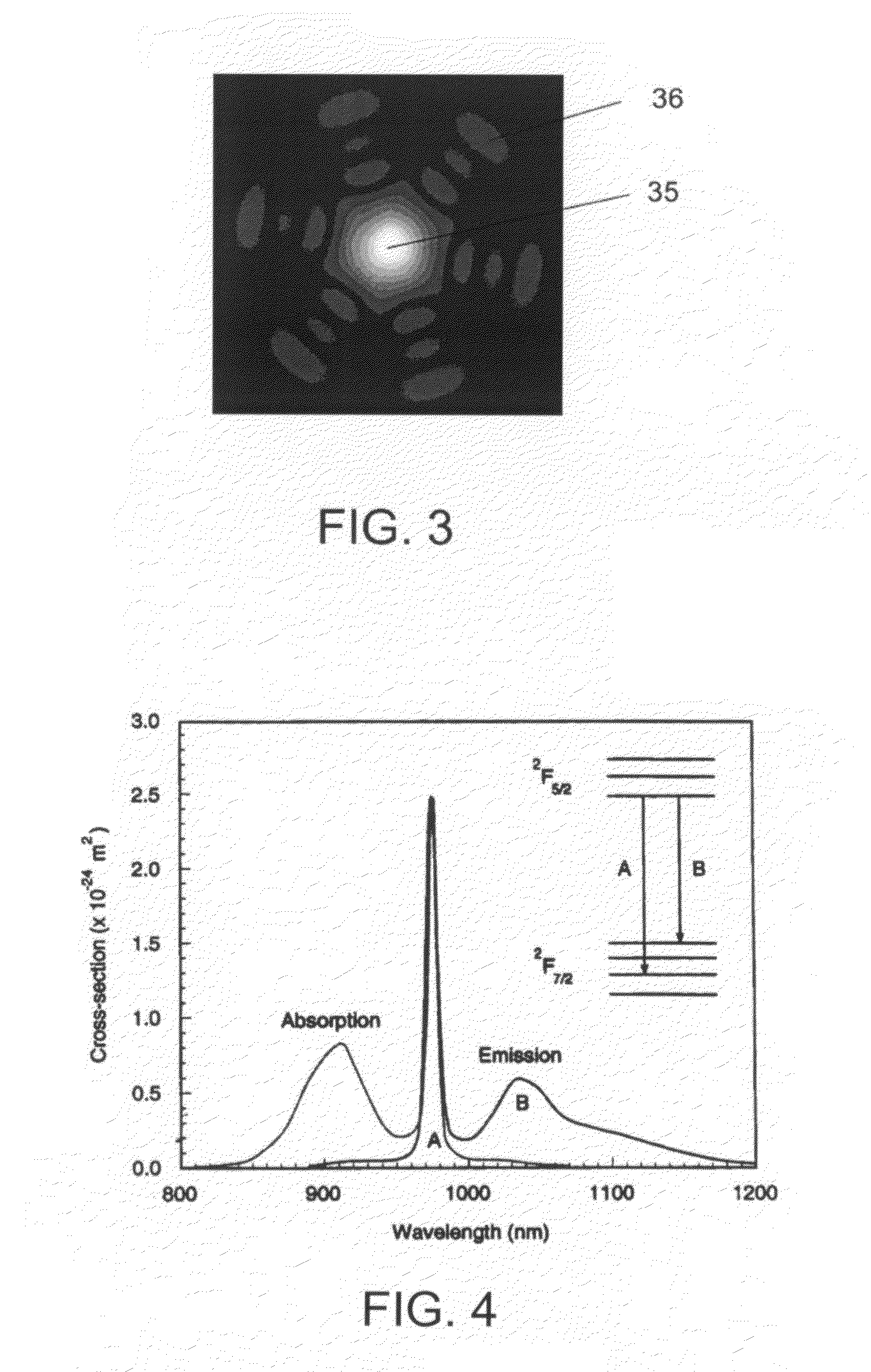Active optical fibers with wavelength-selective filtering mechanism, method of production and their use
a wavelength-selective filtering and active optical fiber technology, applied in the field of optical waveguides, can solve the problems of multiple optical components, difficult to obtain amplification for parts of the emission spectrum, and limited wavelengths available for amplification, so as to achieve the effect of reducing or preferably suppressing amplified spontaneous emission at undesired wavelengths and improving amplification efficiency
- Summary
- Abstract
- Description
- Claims
- Application Information
AI Technical Summary
Benefits of technology
Problems solved by technology
Method used
Image
Examples
Embodiment Construction
[0232]FIG. 1 shows a microscope picture of a solid PBG fiber as described in WO-02 / 101429 (‘a solid PBG fiber’ meaning a PBG fiber that does not rely on voids to achieve the PBG-effect). The PBG fiber comprises a solid core 10 surrounded by a cladding region comprising a substantially 2D periodic arrangement of high-index, solid elements 11 (light areas in picture) dispersed in a low-index cladding background material 12. The fiber of the present example has a pure silica core 10, Ge-doped rods 11 positioned in a triangular lattice in a pure silica background material 12 and around 15 periods surrounding the core region. The present invention also covers other means of forming pass and stop bands, e.g. including fibers having instead of a triangular arrangement, a rectangular (e.g. quadratic) or hexagonal (i.e. planar or 2D-periodic) or circular (e.g. radially periodic, including concentric regions of different (e.g. alternating) refractive indices) arrangement of high-index element...
PUM
 Login to View More
Login to View More Abstract
Description
Claims
Application Information
 Login to View More
Login to View More - R&D
- Intellectual Property
- Life Sciences
- Materials
- Tech Scout
- Unparalleled Data Quality
- Higher Quality Content
- 60% Fewer Hallucinations
Browse by: Latest US Patents, China's latest patents, Technical Efficacy Thesaurus, Application Domain, Technology Topic, Popular Technical Reports.
© 2025 PatSnap. All rights reserved.Legal|Privacy policy|Modern Slavery Act Transparency Statement|Sitemap|About US| Contact US: help@patsnap.com



